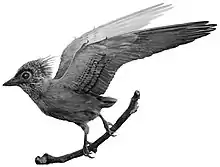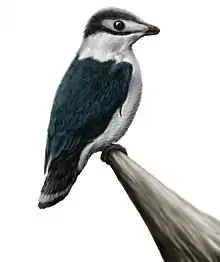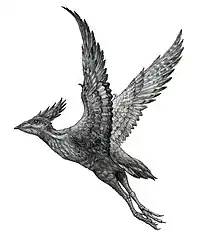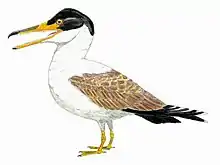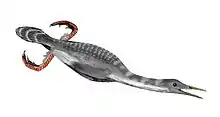Citipes
Citipes (meaning "fleet-footed") is an extinct genus of caenagnathid dinosaurs known from the Late Cretaceous (Campanian aged) Dinosaur Park of southern Alberta, Canada.[1][2] It lived about 76.9–75.8 million years ago. The specializations of the beak in Citipes and other caenagnathids suggest that they were herbivores. The type species, C. elegans had been previously placed within the genera Chirostenotes, Elmisaurus, Leptorhynchos and Ornithomimus.[3]
| Citipes | |
|---|---|
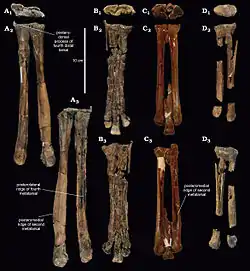 | |
| Holotype foot bones | |
| Scientific classification | |
| Kingdom: | Animalia |
| Phylum: | Chordata |
| Clade: | Dinosauria |
| Clade: | Saurischia |
| Clade: | Theropoda |
| Family: | †Caenagnathidae |
| Subfamily: | †Elmisaurinae |
| Genus: | †Citipes Funston, 2020 |
| Type species | |
| †Ornithomimus elegans Parks, 1933 | |
| Synonyms | |
| |
History

The holotype material, found in 1926 at the Little Sandhill Creek, was originally thought to belong to an ornithomimid; William Arthur Parks in 1933 assigned it to a new species of Ornithomimus: O. elegans.[4] When its oviraptorosaurian nature was revealed around 1989, it was then referred to Chirostenotes or Elmisaurus. In 2013, Longrich et al. made it a second species of their new genus Leptorhynchos. Finally, in 2020, Gregory Funston gave it a genus of its own, Citipes; the name is a Latin word meaning "fleet-footed".
The holotype is a tarsometatarsus. A pair of associated ilia and a sacral vertebra have been referred, as have a pair of fused dentaries, a tibia, and several isolated metatarsals. Osteohistological analysis shows that it was smaller than contemporary caenagnathids, and it is distinguished by fusion of the foot bones.[3]
Classification
The phylogenetic analysis by Funston (2020) places Citipes as the sister taxon to Elmisaurus rarus. This, by definition, places it within the subfamily Elmisaurinae within the family Caenagnathidae, but such a position was not explicitly recovered by the describers.[3]
References
- Longrich, N. R.; Barnes, K.; Clark, S.; Millar, L. (2013). "Caenagnathidae from the Upper Campanian Aguja Formation of West Texas, and a Revision of the Caenagnathinae". Bulletin of the Peabody Museum of Natural History. 54: 23–49. doi:10.3374/014.054.0102. S2CID 128444961.
- Nicholas R. Longrich, Ken Barnes, Scott Clark and Larry Millar (2013) Correction to "Caenagnathidae from the Upper Campanian Aguja Formation of West Texas, and a Revision of the Caenagnathinae".
- Funston, Gregory (2020-07-27). "Caenagnathids of the Dinosaur Park Formation (Campanian) of Alberta, Canada: anatomy, osteohistology, taxonomy, and evolution". Vertebrate Anatomy Morphology Palaeontology. 8: 105–153. doi:10.18435/vamp29362. ISSN 2292-1389.
- Parks, W.A., 1933, "New species of dinosaurs and turtles from the Upper Cretaceous formations of Alberta", University of Toronto Studies, Geological Series, 34: 1-33
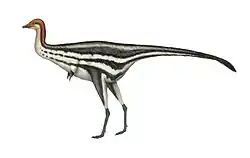
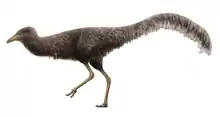

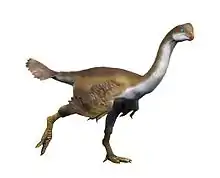
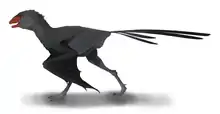
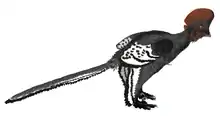
.png.webp)

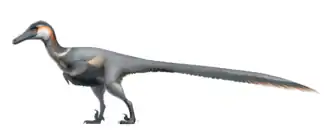

.jpg.webp)
